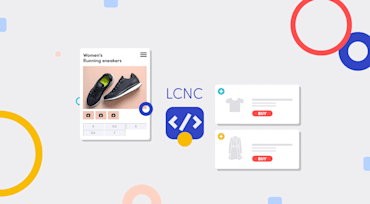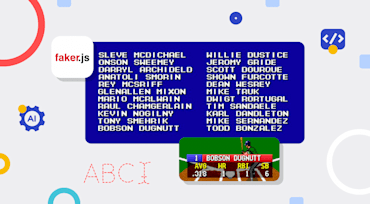The year was 1994. South Africa held its first fully representative democratic election, Netscape Navigator became the first commercially successful web browser. Coconuts Japan re-released EA Sports' MLBPA Baseball video game under the perhaps surprising title Fighting Baseball. Unlike MLBPA Baseball, which was licensed by the Major League Baseball (MLB), Fighting Baseball could not infringe on MLB trademarks, reference the National League or American League by name, or adopt actual team or player names.

To capture audience attention, content creators produce videos with compelling imagery to tell engaging stories. However, many miss one of the most important aspects of video: audio. Not only does riveting audio immerse viewers in the experience, it also enhances visuals with sound effects, commentary, mood music, and such. Inferior audio quickly ruins the ambiance.

What if there was a way to learn programming and different technologies through an interactive gamified experience that eggs them on to learn more through point gains? What if you can earn custom items to equip your avatar while you are exploring a ship with fun and engaging tasks to complete?

Supported by intelligent automation, Cloudinary serves as an effective conduit between media asset management and delivery so you can take maximum advantage of assets, compress workflows, and build and coordinate engaging and inspiring customer experiences. Through Cloudinary’s Digital Asset Management (DAM) solution, which employs the company’s innovative image and video APIs, creative and marketing teams can benefit from them, as well as from many AI-powered and automated capabilities. As a result, you can transform, optimize, and deliver media at scale on an intuitive UI.

When was the last time you thought about storytelling? Perhaps while binge-watching your favorite streaming series or when you were inspired by a shopfront’s window dressing? While browsing your and other websites?

With the digital world brimming with content, opportunities abound for brands and retailers to capitalize on it. Complexities have emerged, however. The ultimate question to answer is how to monetize and personalize digital content while also staying ahead of the competition.

Many content creators and consumers tend to regard video as visuals, but that’s only part of the experience. Immersive video content includes strong audio. Just like in a movie, the audio for video content comprises many components: the narrator or subjects, the background music that sets the mood and draws viewers in, sound effects, and so forth.

We all know the good ol', tireless <img> element, which has been a long-time go-to for inserting graphics into webpages. Time doesn’t stop, however, and neither do technological advancements. So, let’s get you up to speed with the element’s modern alternative: the <picture> element.

Consumers expect modern websites to be mainly visual. But, the more compelling and complex the related media is, the more data is involved, compounding the site’s weight. In today’s content-craving world, delivering unoptimized media can cost you because it leads to sluggish page loads, resulting in visitors abandoning your site in search of a faster alternative. In fact, a page load that takes more than three seconds can cause as many as 40% of your visitors to bounce. Given this competitive, digital-first environment, you can’t afford to lose page views, for time is of the essence.

tl;dr: An AWS-secured and optimized Cloudinary webhook listener for extending the Cloudinary service
Code: Github
A webhook is a communication medium for sending notifications from one platform to another about events that occurred. In place are user-defined HTTP callbacks that are triggered by specific events. When a triggered event takes place on the source site, the webhook listens to the event, collects the data, and sends it to the URL you specified in the form of an HTTP request.
